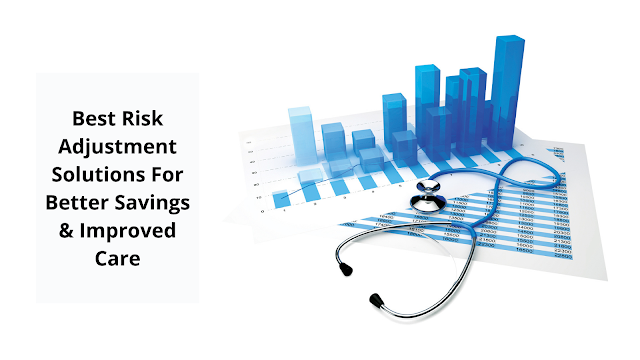Best Risk Adjustment Solutions For Better Savings & Improved Care
Risk adjustment platform is a modern payment technique that uses demographics and diagnoses to create a risk rating that indicates how much a patient's treatment will cost in the upcoming year.
Risk adjustment solutions are a rising source of latent profit potential, but satisfying
Centers for Medicare & Medicaid Services’ payment standards involves a
significant investment of time and money. For the risk score of patients, the
rules linked with risk recordkeeping requirements demand the submission of
precisely picked and validated data consisting of risk profiles for patients'
health.
It is the payer's obligation to submit Centers for Medicare &
Medicaid Services with the risk rating data. As a result, the population health
payers rely on practitioners to diagnose and appropriately correlate every
high-risk patient's record by a rigorous procedure of required information for
coverage.
Furthermore, the regulatory landscape is always changing, and
audits are now more prevalent. So, to ensure timely and regular revenue
payments, recognizing which risk adjustment solutions to employ as well
as when and how to use them, is important.
To keep up with the new burdens on the health service amid
pandemics, healthcare plans will have to adapt innovative risk-adjustment
techniques. These may include;
- · Innovative approaches to managing at-risk groups, with
a focus on innovation and telehealth as a major resource
- ·
Utilize
risk analytics to improve individual focusing for both retrospective chart
chasing and potential meetings.
- ·
Before
claims settlement, involve caregivers in possible risk adjustment to
ensure more comprehensive and detailed reporting.
- · Recognize effects of electronic health records accessibility, NLP aided source code tools, and new pattern searching methods.
NLP Enabled Risk Adjustment Solution
By using NLP-enabled processing application functionalities,
customers may improve profits and resources against a variety of risk
adjustment organizational objectives and targets.
As a consequence, every risk-adjusted patient group may get an end-to-end approach for detecting and reporting appropriate Hierarchical condition category codes.
Risk Adjustment & Unstructured Data NLP
As unstructured data accounts for 80% of current statistical patient data, it must be included for proper coding and care gap analyses. Once integrated into the system, NLP helps caregivers to record quicker and more correctly, saving time and money. Providers gain the most accurate perspective of patient risk by digging this unstructured data with sophisticated analytics.
What can be done for care improvement by using risk adjustment?
For an improved care system, these points must be followed;
1. Having a comprehensive list of problems
2. Making sure that patients are seen yearly
3. Increasing approval and optimizing electronic medical reports
4. Widely accessible communication
5. Keeping track of progress and recognizing chances


.png)
Comments
Post a Comment
Please do not enter any spam link in the comment box